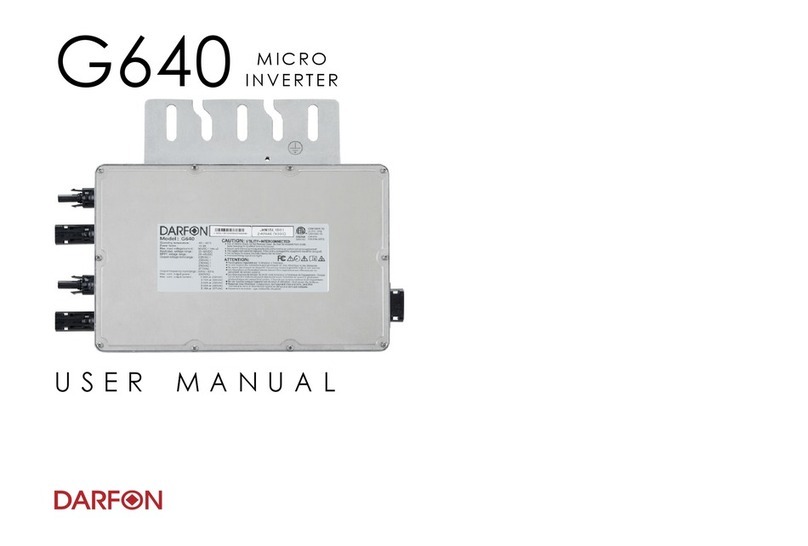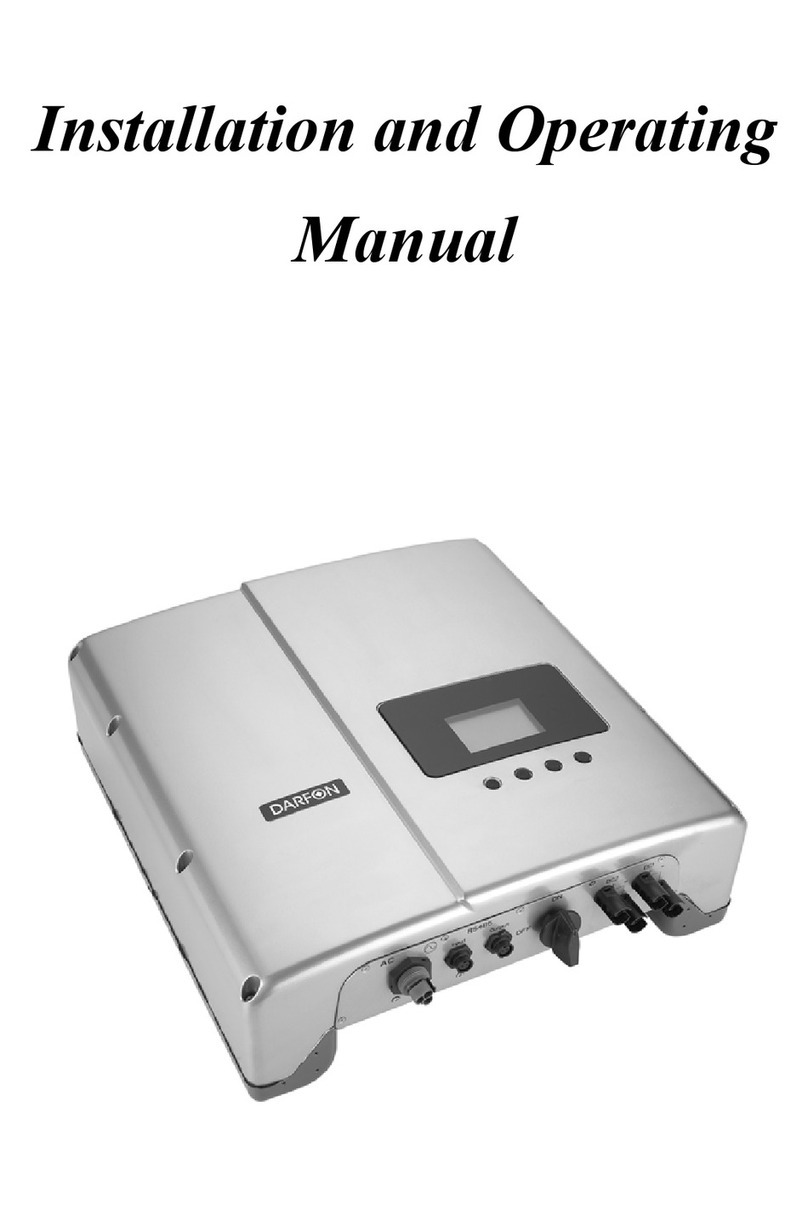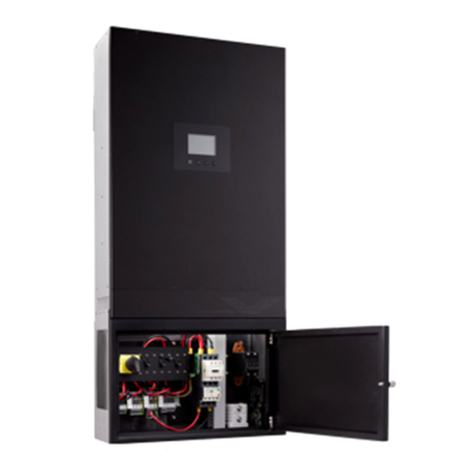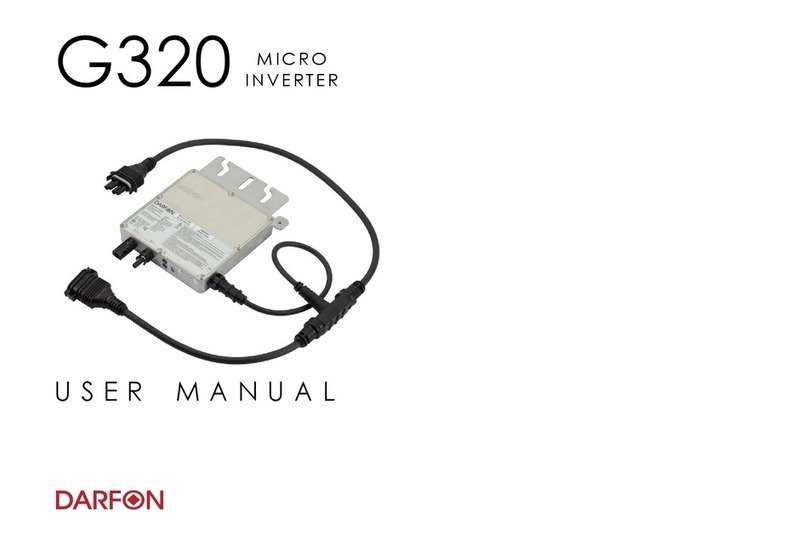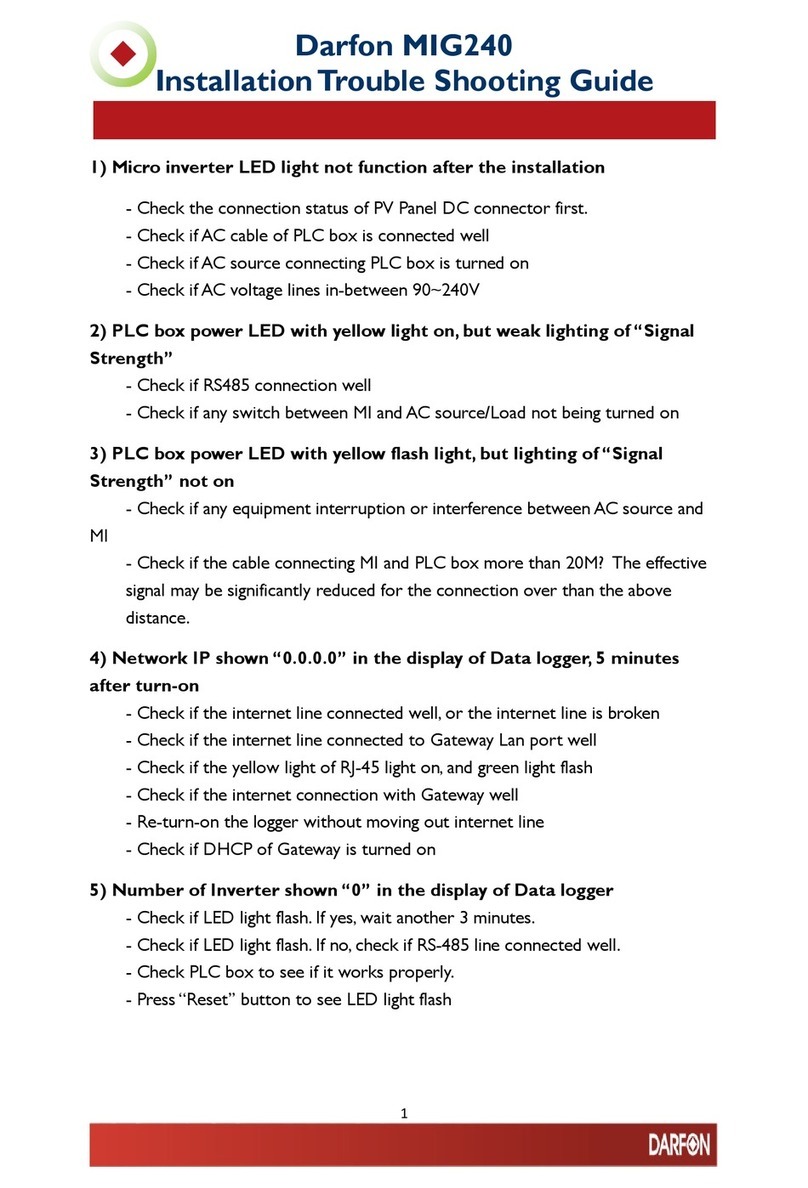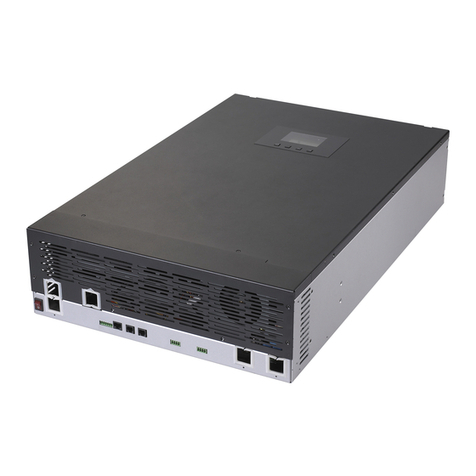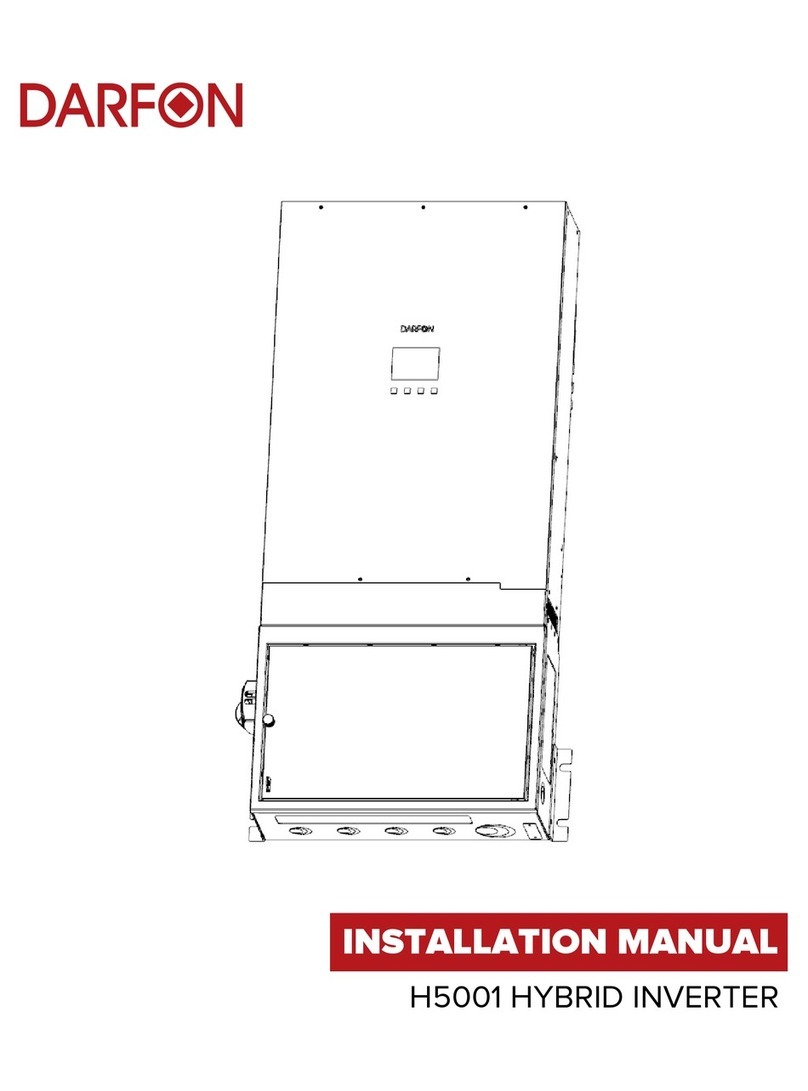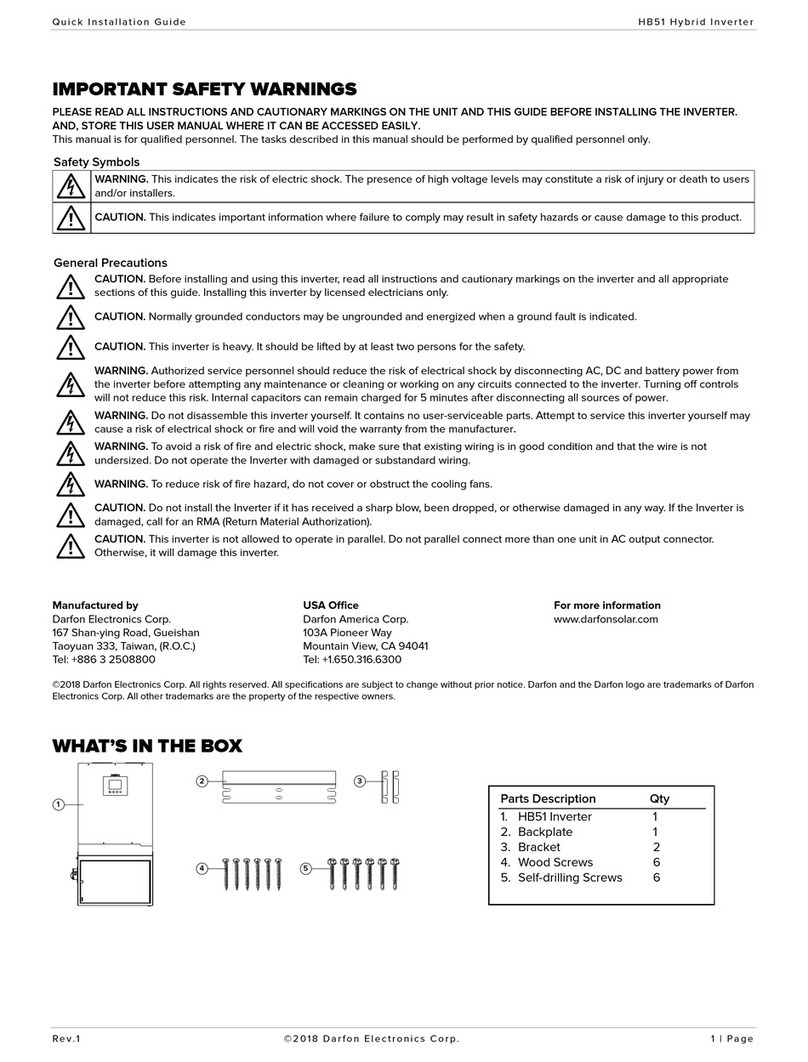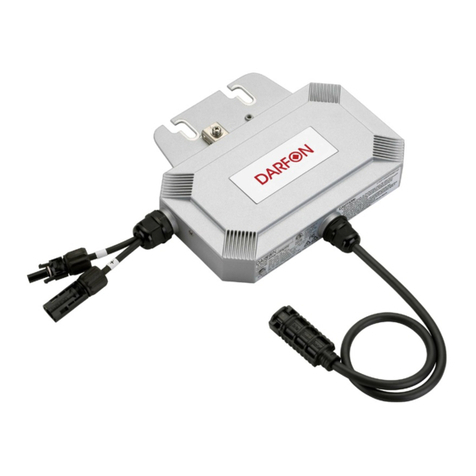
I N S T A L L A T I O N M A N U A L H 5 0 0 1 H Y B R I D I N V E R T E R
R e v . 2 © 2 0 1 8 D a r f o n E l e c t r o n i c s C o r p . 2 | P a g e
TABLE OF CONTENTS
IMPORTANT SAFETY WARNINGS...................................................................................3
PRODUCT OVERVIEW.......................................................................................................4
MOUNTING THE INVERTER..............................................................................................5
Installing the Inverter onto the Wall ....................................................................................... 5
REMOVING AND INSTALLING THE DEAD-FRONT COVER...........................................6
PV MODULE (DC) CONNECTION .....................................................................................7
Connecting the PV Arrays......................................................................................................... 7
GRID (UTILITY) CONNECTION .........................................................................................8
Connecting to the Grid/Utility ..................................................................................................8
Circuit Protection......................................................................................................................8
BATTERY CONNECTION AND CHARGING REQUIREMENTS.......................................9
Connecting the Batteries .........................................................................................................9
BATTERY CHARGING REQUIREMENTS.......................................................................10
Charging Characteristics..........................................................................................................10
LOAD (AC OUTPUT) CONNECTION...............................................................................11
Connecting to the Load........................................................................................................... 11
OPERATION AND DISPLAY PANEL...............................................................................12
Display Panel Overview ...........................................................................................................12
Starting the System .................................................................................................................12
Stopping the System ...............................................................................................................12
LCD Screen –Icons and Pages ................................................................................................13
System Settings .......................................................................................................................15
Error and Warning Definition..................................................................................................17
GENERATOR [GENERATOR KIT SOLD SEPARATELY]..............................................19
Generator Sizing ......................................................................................................................19
Automatic Start Generator .....................................................................................................19
CONFIGURING THE HARDWARE ..................................................................................20
Connecting to the Hardware ................................................................................................. 20
Using the Application Software..............................................................................................21
Modifying the Parameters (Installer Login Only) ................................................................. 23
AP Parameters ........................................................................................................................ 25
MAINTENANCE & CLEANING.........................................................................................26
Wiring Diagram ....................................................................................................................... 26
SPECIFICATIONS.............................................................................................................27
GRID SUPPORT PARAMERTERS (UL1741SA).............................................................28
